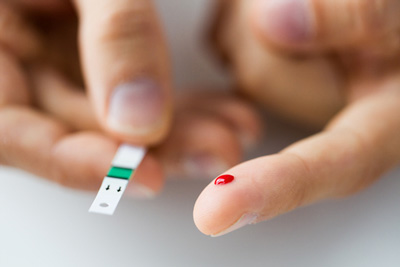New data for semaglutide and liraglutide presented at ENDO 2016
Posted: 2 April 2016 | | No comments yet
Semaglutide significantly improved glycaemic control compared to placebo in adults with type 2 diabetes previously managed with diet and exercise alone…


Novo Nordisk has presented new data for semaglutide and Victoza (liraglutide) at the Endocrine Society’s 98th Annual Meeting and Expo (ENDO 2016) in Boston, MA, US.


Findings from the first Phase IIIa clinical trial for semaglutide, demonstrated that treatment with the investigational therapy administered once-weekly, significantly improved glycaemic control compared to placebo in adults with type 2 diabetes previously managed with diet and exercise alone.
The 30-week SUSTAIN 1 trial, evaluating the efficacy and safety of semaglutide monotherapy vs placebo in 388 adults with type 2 diabetes,1 showed that, from a mean baseline HbA1c of 8.1%, adults treated with 0.5 mg and 1.0 mg semaglutide achieved significantly greater HbA1c reductions of 1.5% and 1.6%, respectively, vs <0.1% with placebo.
In addition, more adults treated with 0.5 mg and 1.0 mg semaglutide achieved HbA1c targets compared with placebo: HbA1c <7% and ≤6.5%. The trial also demonstrated that adults treated with 0.5 mg and 1.0 mg semaglutide achieved significantly greater reductions from baseline in mean body weight of 3.7 kg/8.16 lb and 4.5 kg/9.92 lb, respectively, vs 1.0 kg/2.20 lb with placebo.
Commenting on the results, Christopher Sorli, SUSTAIN 1 investigator and Chair of the Department of Diabetes, Endocrinology and Metabolism, Billings Clinic, US, said: “Achieving glycaemic control remains a significant challenge for people with type 2 diabetes and their treating physicians. It is encouraging that almost three out of four adults treated with semaglutide in the SUSTAIN 1 trial achieved the HbA1c target of less than seven percent.”
Furthermore, adults treated with both doses of semaglutide demonstrated significantly greater reductions from baseline in fasting plasma glucose compared with placebo.
The most common adverse events observed for adults treated with 0.5 mg and 1.0 mg semaglutide and placebo were gastrointestinal, which were mainly mild or moderate. The rate of nausea diminished over time. Comparable rates of severe adverse events were observed for adults treated with 0.5 mg and 1.0 mg semaglutide compared with placebo. The proportion of adults discontinuing due to adverse events was low across treatment groups.
Switching from sitagliptin to Victoza provided superior HbA1c reductions
Findings from a clinical trial comparing Victoza (liraglutide 1.8 mg) and sitagliptin (100 mg), both in combination with metformin, demonstrated that switching from sitagliptin to Victoza provided superior HbA1c reductions vs continuing with sitagliptin treatment in adults with type 2 diabetes.
The 26-week LIRA-SWITCH trial assessed the efficacy and safety of Victoza as an add-on to metformin in 407 adults with type 2 diabetes who switched from sitagliptin.1 Of the 407 adults uncontrolled on sitagliptin (HbA1c 7.5–9.5%) at week 26, those who switched to Victoza (n=203) achieved a superior reduction in HbA1c vs those who continued their sitagliptin treatment (n=204).
Additionally, adults who switched to Victoza experienced significantly greater body weight reductions vs those who continued with their sitagliptin dose.
“The LIRA-SWITCH trial results provide valuable insight that adults uncontrolled on sitagliptin may achieve a superior HbA1c reduction with liraglutide 1.8 mg vs continuing on sitagliptin treatment,” said Dr Maximo Maislos, Director of Western Negev Mobile Diabetes Clinic Program, and Diabetes and Metabolism, Ben-Gurion University FOHS, Beer Sheva-Israel and investigator of the LIRA-SWITCH trial. “These findings are valuable as there is limited clinical evidence to guide treatment strategy when people with type 2 diabetes are uncontrolled on second-line therapy.”
The trial demonstrated that more adults with type 2 diabetes treated with Victoza® vs sitagliptin achieved HbA1c targets <7% and ≤6.5%. Furthermore, adults treated with Victoza demonstrated significantly greater reductions in fasting plasma glucose vs those treated with sitagliptin.
Adverse events were more common in the Victoza group vs the sitagliptin group (68.8% vs 56.9%), with gastrointestinal side effects more frequent with Victoza: nausea (21.8% vs 7.8%) and diarrhoea (16.3% vs 9.3%). There were no reports of severe hypoglycaemia and no reports of confirmed nocturnal hypoglycaemia.




